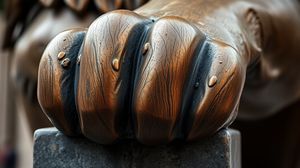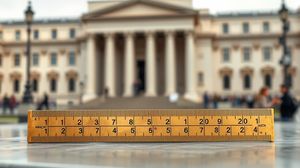
Nelson's Column stands as a proud centerpiece in Trafalgar Square, commemorating Admiral Horatio Nelson, one of Britain's most celebrated naval heroes. The column is a recognizable symbol of London, towering at about 52 meters tall, with a statue of Nelson himself gazing out over the city. Completed in 1843, the monument was built to honor his victory at the Battle of Trafalgar in 1805 where he led the British fleet to a decisive win against the combined fleets of France and Spain.
What makes the column fascinating is its impressive design created by architect William Railton. The Corinthian column is crafted from granite, and the statue itself, sculpted by Edward Hodges Baily, is made from Craigleith sandstone. The four bronze lions at the column's base, which protectively surround the monument, were added in 1867. These majestic lions were designed by Sir Edwin Landseer and cast by the Mozley and Company foundry using melted-down cannons from the French fleet.
Intriguingly, the column's height was once a subject of dispute. Originally in competition with landmarks such as the Duke of York Column, Nelson's Column was funded managed to reach a height worthy of its heroic subject through public and governmental contributions, finally settling any arguments about its stature. This height allowed it to be visible from several vantage points across London, symbolizing Britain's naval supremacy.
An interesting nugget of history is that the sandstone statue at the top is not the original plan. The Admiralty had initially proposed a different design. However, Baily's version, which captures Nelson in his Trafalgar uniform with one arm missing—an silent allusion to the injury he suffered in battle—became an enduring emblem of national pride.
The human element of Nelson's Column includes the hidden population of pigeons it attracts, despite various attempts to prevent them from roosting. This interaction has become part of the monument's lore and charm, even though measures like anti-perching spikes have been employed to protect the statue from damage by the birds.
A lesser-known fact about the column is the time capsule placed within its foundation. The capsule includes naval relics, coins from the time, and a set of plans. Not visible to the public, it remains a historical treasure trove from the 1800s, waiting to be unearthed by future generations.

Making the Most of Your Visit:
If you want to get the best view of the column itself, plop yourself down at the base of one of the iconic lions. It gives you a great perspective of Nelson overseeing the city and a fun view of his slightly skewed hat. Plus, those lions are quite photogenic, though they don't bite!
The replica of Nelson's ship, HMS Victory, etched into the pavement nearby is easy to miss but a neat detail when you spot it. It's lovely to compare how they aligned all that messaging in the public space.
Don't forget to look down at the plaques at the base of the column. They depict Nelson's most famous battles and are a treasure trove of fascinating historical detail that's often overlooked.
Mind the pigeons! While they add to the London vibe, you might want to keep a little distance if you're enjoying a sandwich. Those anti-pigeon spikes aren't foolproof!
If you've got a sturdy zoom lens, bring it along. Zooming in on the detail of Nelson's statue from ground level can give you views that the casual glancer would miss.

Visiting Times & Costs:
Nelson's Column is an open-air monument located in Trafalgar Square and is accessible to the public at all times throughout the year. There is no entrance fee or charge to visit Nelson's Column and the surrounding area of Trafalgar Square.
As it is located outdoors, visitors can access the site freely, making it an excellent destination for both scheduled tours and spontaneous visits.
While the column itself is not accessible for climbing or entering, the surrounding area is pedestrian-friendly, and visitors can enjoy viewing the monument and the public artworks freely.
Accessibility:
- Trafalgar Square is generally accessible for individuals with mobility challenges, featuring step-free routes around the square.
- Some areas may be crowded, especially during public events or peak tourist times, which could impact ease of movement in the vicinity of the column.
As always, visitors are advised to check for any specific events or maintenance work that might affect access prior to visiting.

Address & Map:

Nearby:























